Now six books deep into THE ENEMY series, author Charlie Higson know more than just a little about rotters, lurkers, brain biters, the infected, flesh-eaters, night-walkers, and the undead… ZOMBIES. Check out the newest suspense-filled installment, THE HUNTED, and read on to find out his top ten moments in zombie history.
WARNING: There are some bloody braaaaaaaaains featured in this guest post!
Zombies are undoubtedly the most popular monsters in the world at the moment. As a writer of (loosely) “zombie” fiction, people often ask me why this is so—why are zombies everywhere? To tell you the truth, I have absolutely no idea. Sorry. But what I can do is chart their rise to flesh-chomping supremacy.
Here, in chronological order, is my rundown of the ten most important moments in zombie history. Without these key events, zombies wouldn’t be the creatures we know and love, and whose brains we love to splatter.
1. Dr. Frankenstein brings “the creature” to life in Frankenstein by Mary Shelley (1818)
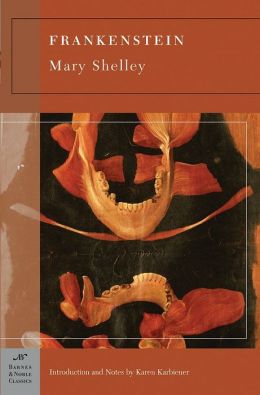 You can argue all night over whether Frankenstein is a zombie story. I say that it is. So there. Certainly, without this book the whole history of horror would be very different. This is the first mad scientist story. A cautionary tale about man believing that through science he is better than God. And, like every science-based horror story since, it all goes horribly and violently wrong. Zombie movies follow this pattern —they tend to have some kind of pseudoscientific explanation for what’s going on. It’s never supernatural. It is always the result of human-made science causing havoc.
You can argue all night over whether Frankenstein is a zombie story. I say that it is. So there. Certainly, without this book the whole history of horror would be very different. This is the first mad scientist story. A cautionary tale about man believing that through science he is better than God. And, like every science-based horror story since, it all goes horribly and violently wrong. Zombie movies follow this pattern —they tend to have some kind of pseudoscientific explanation for what’s going on. It’s never supernatural. It is always the result of human-made science causing havoc.
A zombie story, though? The details are murky in the book, but the subsequent films made it very clear that Frankenstein creates a body out of stitched-together corpses, and brings it back to life. And the creature is none too happy about it, and sets out to destroy us all. If you look at Boris Karloff’s performance in the original Frankenstein film, it’s basically the classic zombie stomp. So, for me, this is where it all began.
2. “No one dared to stop them for they were corpses walking in the sunlight.”—from The Magic Island by William Seabrook (1929).
 Published as a travelogue in 1929, William Seabrook’s book is supposedly a factual account of life and beliefs in Haiti. Parts of it read almost like a novel, and it’s hard to say how much of it is really true and how much of it Seabrook made up. Whatever the case, it was a sensational hit and made the concepts of voodoo and zombies widely known in polite society. Large parts of the book are condescending and borderline racist, and the original illustrations are highly suspect, but without this book it might have been many years before zombies became well known. It has chapter titles like “The Altar Of Skulls” and “Dead Men Working In The Cane Fields.” It was the inspiration for Ian Fleming’s James Bond novel Live And Let Die and also…
Published as a travelogue in 1929, William Seabrook’s book is supposedly a factual account of life and beliefs in Haiti. Parts of it read almost like a novel, and it’s hard to say how much of it is really true and how much of it Seabrook made up. Whatever the case, it was a sensational hit and made the concepts of voodoo and zombies widely known in polite society. Large parts of the book are condescending and borderline racist, and the original illustrations are highly suspect, but without this book it might have been many years before zombies became well known. It has chapter titles like “The Altar Of Skulls” and “Dead Men Working In The Cane Fields.” It was the inspiration for Ian Fleming’s James Bond novel Live And Let Die and also…
3. The zombie falling into the sugar cane grinder in White Zombie (1932)
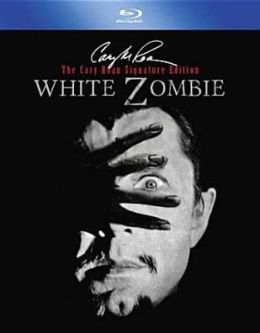 White Zombie is not the greatest film in the world, but it is the first zombie film ever made. It was heavily influenced by The Magic Island and stars the brilliantly named horror star Bela Lugosi playing the even more brilliantly named Murder Legendre. Murder is a voodoo priest and plantation owner who falls in love with another man’s fiancé, makes everyone think she’s dead, and brings her back to life as his own personal zombie slave—as it says on the poster, “With his zombie grip he made her perform his every desire!” Bad man. If you only watch one scene, watch the one where Murder’s zombie plantation workers are tipping sugarcane into massive grinding machines. One of them falls in and the others keep on working with without batting an eyelid as he is ground up with the sugar cane.
White Zombie is not the greatest film in the world, but it is the first zombie film ever made. It was heavily influenced by The Magic Island and stars the brilliantly named horror star Bela Lugosi playing the even more brilliantly named Murder Legendre. Murder is a voodoo priest and plantation owner who falls in love with another man’s fiancé, makes everyone think she’s dead, and brings her back to life as his own personal zombie slave—as it says on the poster, “With his zombie grip he made her perform his every desire!” Bad man. If you only watch one scene, watch the one where Murder’s zombie plantation workers are tipping sugarcane into massive grinding machines. One of them falls in and the others keep on working with without batting an eyelid as he is ground up with the sugar cane.
Zombie fiction has always had a satirical element. They are stories about people en masse, how we are used and abused. Indeed, the whole Haitian voodoo thing came from a mash-up of African religious practices, the horrors of the slave trade, and Christianity. In books and films we’ve seen zombies representing slaves, repressed minorities, immigrants, victims of mass epidemics, plague victims, aids victims, and mindless consumers, to name but a few.
White Zombie wasn’t the most successful of the great cycle of horror films in the 1930s. There were several attempts at zombie films afterward, however, including Jacques Torneur’s I Walked with a Zombie, and Hammer films’ Plague of the Zombies. But these were old school voodoo zombies. They weren’t the modern flesh-eating apocalyptic ones we are so obsessed with today. The inspiration for the modern zombie came from…
4. Robert Neville stakes his neighbors in I Am Legend by Richard Matheson (1954)
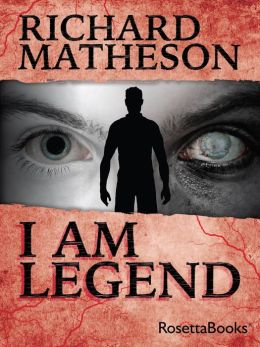 This is actually a vampire book, but vampires and zombies share many similarities (both are living dead, they feed on humans, their bite passes on the “virus,” there are special ways of killing them, etc.) and it was the direct inspiration for the film Night of the Living Dead. Matheson was one of the writers in the 50s who brought the horror story into the modern world, setting his novels in contemporary American suburbia. The central character, Robert Neville, is the last ordinary human alive in his neighborhood. He’s surrounded by vampires so degenerate that they behave like classic homicidal zombies. Every day he tries to stake them in their beds, and every night they surround his house and try to get in at him. The apocalyptic set up, and the idea of the last humans being besieged in their home by murderous family friends and neighbors was used by George Romero in…
This is actually a vampire book, but vampires and zombies share many similarities (both are living dead, they feed on humans, their bite passes on the “virus,” there are special ways of killing them, etc.) and it was the direct inspiration for the film Night of the Living Dead. Matheson was one of the writers in the 50s who brought the horror story into the modern world, setting his novels in contemporary American suburbia. The central character, Robert Neville, is the last ordinary human alive in his neighborhood. He’s surrounded by vampires so degenerate that they behave like classic homicidal zombies. Every day he tries to stake them in their beds, and every night they surround his house and try to get in at him. The apocalyptic set up, and the idea of the last humans being besieged in their home by murderous family friends and neighbors was used by George Romero in…
5. The zombie child kills and eats its mother in Night of the Living Dead(1968)
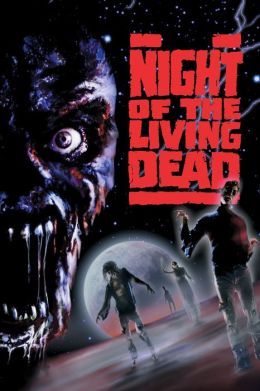 Yes, you read that right. This movie absolutely shocked viewers at the time. If I Am Legend was in many ways the first modern horror novel, then Night of the Living Dead was the first modern horror movie. All the rules were broken. This is a brutally uncompromising, nihilistic nightmare of a movie—like nothing that had ever been seen before—and in it George Romero came up with everything we expect from the modern zombie (except for one detail…). A plague causes the dead to rise from their graves, and all they want to do is kill and eat the living. If you get bitten, you will die and come back as one of them. The monsters bear very little relation to traditional voodoo zombies, and Romero never actually calls them zombies—they’re just called ghouls. He gave up arguing and now calls them zombies, though. If you’ve created a phenomenon, you might as well take the credit for it.
Yes, you read that right. This movie absolutely shocked viewers at the time. If I Am Legend was in many ways the first modern horror novel, then Night of the Living Dead was the first modern horror movie. All the rules were broken. This is a brutally uncompromising, nihilistic nightmare of a movie—like nothing that had ever been seen before—and in it George Romero came up with everything we expect from the modern zombie (except for one detail…). A plague causes the dead to rise from their graves, and all they want to do is kill and eat the living. If you get bitten, you will die and come back as one of them. The monsters bear very little relation to traditional voodoo zombies, and Romero never actually calls them zombies—they’re just called ghouls. He gave up arguing and now calls them zombies, though. If you’ve created a phenomenon, you might as well take the credit for it.
Night of the Living Dead was a cult hit, popular among young people, students, and psychopaths. It built a steady following and influenced every zombie movie that came after, but it was never a massive hit in its time. The Italians loved it, though, and the great Italian horror director Dario Argento produced a sequel with George Romero…
6. Zombie vs. helicopter in Dawn of the Dead (1978)
This was the movie that really put zombies on the map. It was a huge hit. The premise is great: the last humans are holed up inside a shopping mall as the zombies try to get in. There’s a very beautiful moment when a zombie is attacking some people on a helicopter and the blade slices the top of his head off like a hard-boiled egg (Romero used an actor with a very low forehead and built it up with a prosthetic). This was the moment when zombies went ballistic. It is gruesome, disgusting, funny, and distressing all at the same time. And that’s what you want from a zombie movie.
7. “Brains!” from Return of the Living Dead (1985)
Romero had nothing to do with Return of the Living Dead, but this film introduced the one missing detail of the classic cannibal zombie: the idea that, for some reason, they are obsessed with eating our brains. There is a rather nasty zombie in this movie, known as Tar Man, who chases kids while groaning the classic line “Brains!”


8. Fast zombies in 28 Days Later (2002)
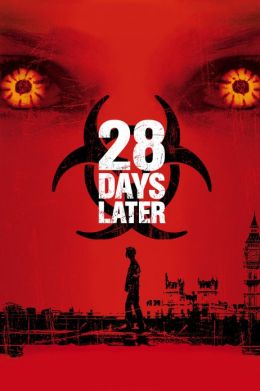 How do you make zombies scary in the modern world of filmmaking, where everything is hyperkinetic action bullets, missiles, buildings falling down, and things blowing up? The idea of some rotting corpses shambling around moaning perhaps loses its impact. So what’s the solution?Fast zombies. That’s what Danny Boyle came up with in 28 Days Later. These zombies won’t wait for the green light at a crossing—they run at you like bats out of hell. The action sequences are fast, intense, and bone-crushing. Personally, I’m a traditionalist. I like my zombies slow. But there’s no doubt this movie shook up the zombie world and introduced a new kind of threat.
How do you make zombies scary in the modern world of filmmaking, where everything is hyperkinetic action bullets, missiles, buildings falling down, and things blowing up? The idea of some rotting corpses shambling around moaning perhaps loses its impact. So what’s the solution?Fast zombies. That’s what Danny Boyle came up with in 28 Days Later. These zombies won’t wait for the green light at a crossing—they run at you like bats out of hell. The action sequences are fast, intense, and bone-crushing. Personally, I’m a traditionalist. I like my zombies slow. But there’s no doubt this movie shook up the zombie world and introduced a new kind of threat.
9. Simon Pegg and Nick Frost throw their record collection at the attacking zombie in Shaun of the Dead (2004)
There had been horror films before Shaun of the Dead, of course; there had even been a few comedy zombie films (like Peter Jackson’s extraordinary scatological Brain Dead—a must see), but this is a fanboy movie about zombie films even as it’s a zombie film in its own right. It comments ironically, knowingly, lovingly, scarily, gorily, and hilariously on previous zombie movies, our love of them, and our obsession with them. Perhaps the moment that best sums this up is when, in order to mingle with the zombies, the surviving humans practice how to walk like zombies. The record throwing scene, however, where Pegg and Frost’s characters discuss which records it’s okay to throw to defend themselves and which they should keep, is very funny and very contemporary and asks, “How can you make a horror movie in a post Scream world?”
(This movie also has a great sequence of them whacking the landlord with pool cues to the tune of “Don’t Stop Me Now.”)
10. Peak zombie—World War Z (2013)
Was this the moment when the zombie wave crested and began to crash? We shall see. But it looks like perhaps this movie marked the point when we’d finally had enough of zombies. It was a financial hit, but somehow it never really caught on and was never loved. Maybe zombies shouldn’t be so much in the mainstream. The movie is based on a brilliant book by Max Brooks that is worth checking out, and it was probably the biggest budget zombie movie ever made, but the response was sort of—meh. It doesn’t really hang together, and it never generates big scares, but there are some great moments and images, such as the huge living tower of zombies scrambling over each other to get over the protective wall around Jerusalem. These are 28 Days Later zombies—fast and violent, relentless and brutal, swarming like killer ants. Is that image a metaphor for too many zombies, though? Have we all had enough of them? Do we want new monsters and new scares?
Time will tell.
Perhaps your own top ten most important moments in zombie history would be different. If I had had the space, I definitely would have put in The Walking Dead, which became the most popular drama on US television; theoriginal comic is pretty cool, too (some would say superior). This really is zombies hitting the mainstream, but somehow the TV series retains a grungy authentic zombie heart in a way that World War Z didn’t. Or should I have included zombie versus shark from the Italian movie Zombie Flesh Eaters, an unofficial sequel to Dawn of the Dead? Certainly this is a seminal moment from zombie history. Or what about Max Brooks’ other undead masterwork, the Zombie Survival Guide (the moment when people began to think that zombies were real), or Marvel’s zombie comics? Pride and Prejudice and Zombies? Jonathan Maberry’s Rot and Ruin? Zombie romance in Warm Bodies? And what about all the great zombie computer games, e.g. Left for Dead, Dead Island, Plants vs. Zombies, Dead Rising, Call of Duty in zombie mode? And then there’s the zombie walks, scare rides, weddings…
Damn. Okay, let’s face it—this should have been a top 20 list. Maybe next time.
~barnesandnoble.com



No comments:
Post a Comment